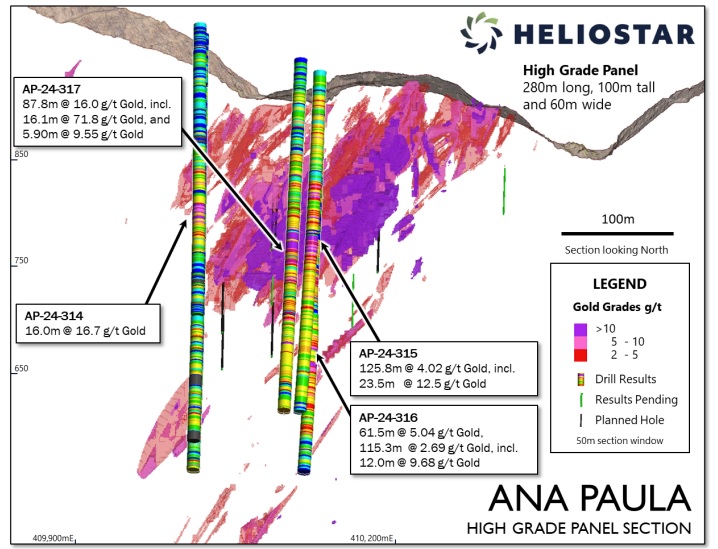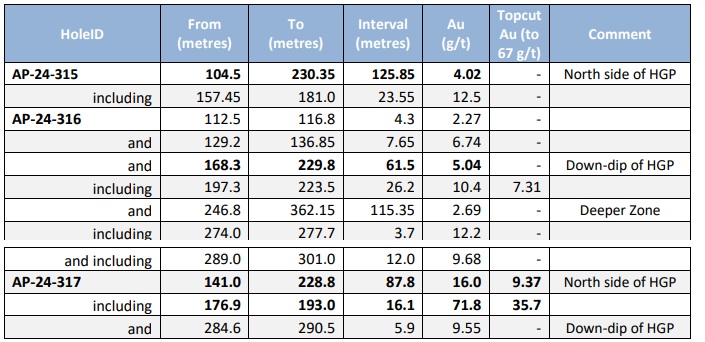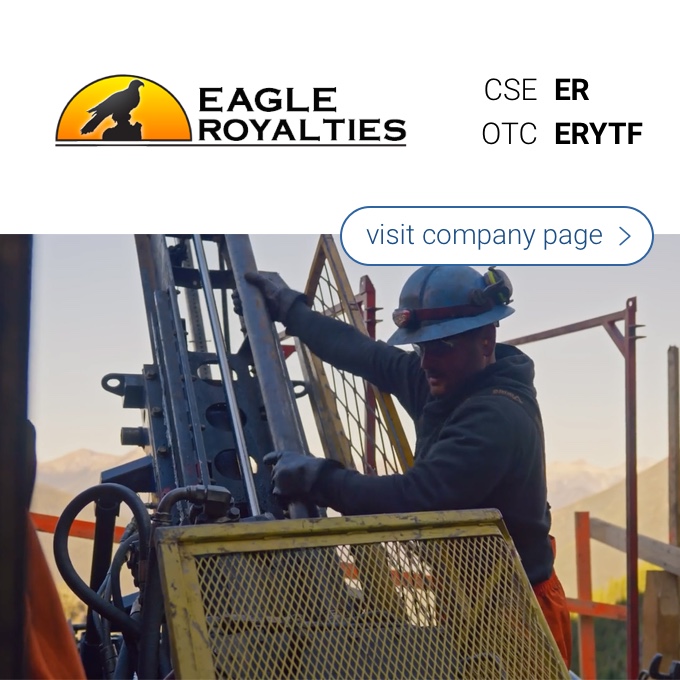
Heliostar Metals (HSTR.V) released the assay results from three more holes that were drilled as part of its 2024 drill program at Ana Paula. The purpose of the two holes the company reported on was to expand the high-grade panel, and given the spectacular mineralized intervals it’s fair to say the company clearly succeeded as all three holes intersected high-grade mineralization. The 4.02 g/t encountered in hole AP-24-315 isn’t the highest grade but encountering that grade over an interval of in excess of 125 meters is excellent. And keep in mind it includes just over 23.5 meters of 12.5 g/t gold as well.

Hole 316 intersected the zone down dip of the high-grade panel with 61.5 meters containing 5.04 g/t gold but even more interesting is the fact that this hole intersected a deeper zone with a pretty thick interval of 115.35 meters containing 2.69 g/t gold. Again, 2.69 g/t gold isn’t high but applying a recovery rate of 80% implies a recoverable rock value of almost US$175/t at $2500 gold.
The real eye-catcher was hole AP-24-317 where visible gold was detected in the core. The assay results didn’t disappoint either as the drill bit intersected almost 88 meters of 16 g/t gold, including 16.1 meters of 71.8 g/t gold (which was capped at 35.7 g/t gold using a cap of 67 g/t gold).
These three holes indicate the high-grade panel is growing down-dip and towards the north while the grades that were encountered are – in some locations – higher than the grade in the resource model. In his comments, CEO Charles Funk mentions the 2024 drill results suggest the conversion of inferred resources into a measured and indicated resource category could result in higher gold grades as well and that should bode well for the feasibility study at Ana Paula. That feasibility study is expected in Q4 2024.
Disclosure: The author has a long position in Heliostar Metals. Heliostar is a sponsor of the website. Please read the disclaimer.
